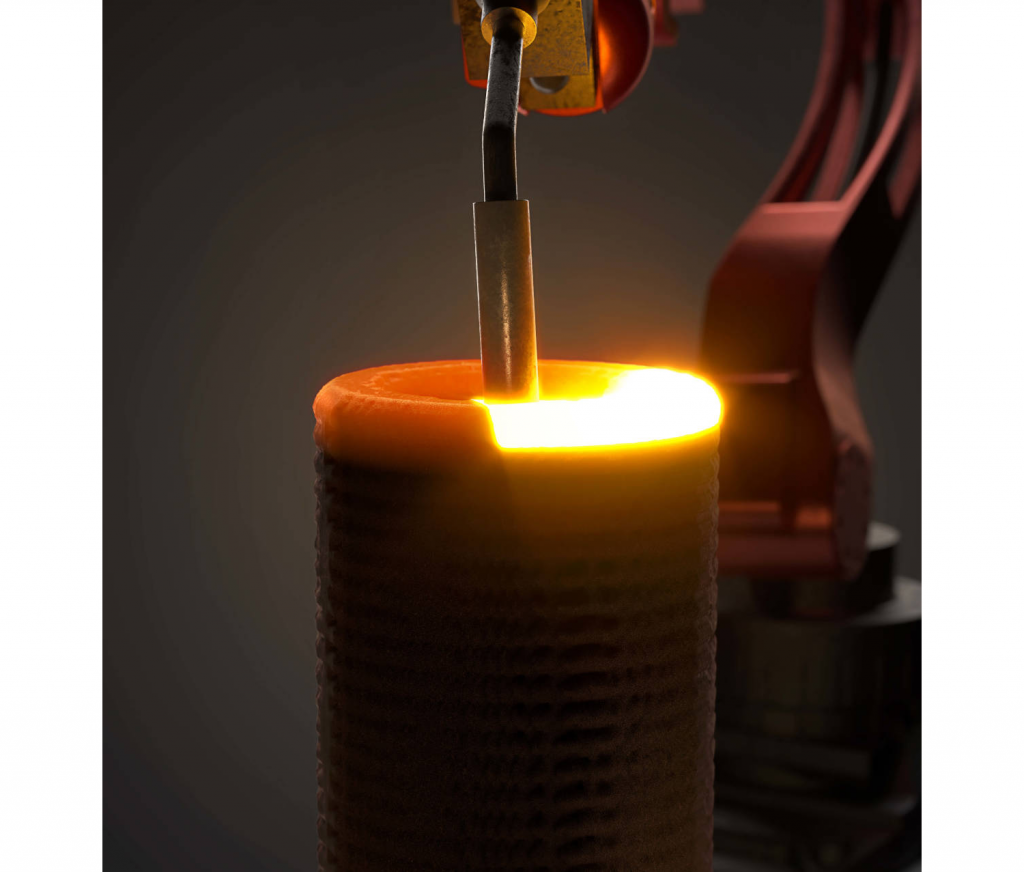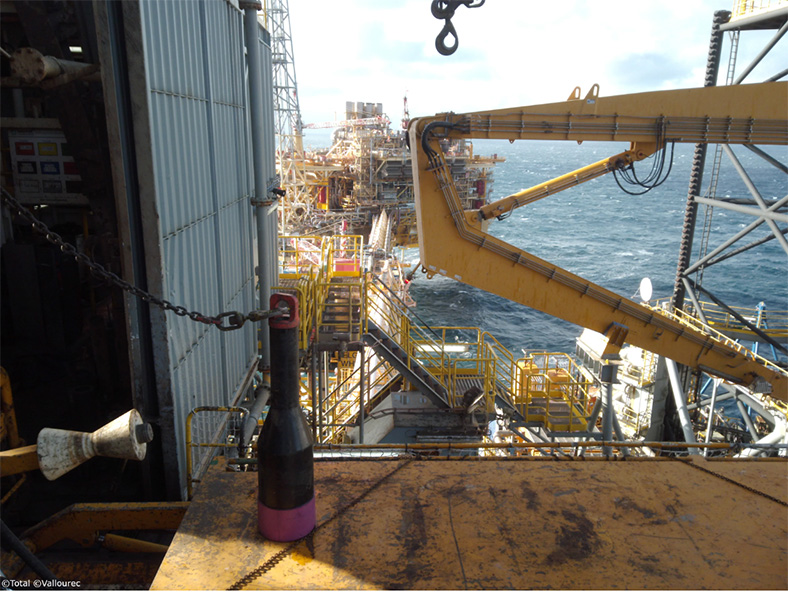Oil and gas firm Vallourec has broken new ground in the offshore equipment manufacturing sector by designing and 3D printing a safety-critical water bushing component for the very first time.
Designed for French oil major Total, the part is reportedly the first ever pressure-containing component to be 3D printed using the Wire Arc Additive Manufacturing (WAAM) process. Standing 1.2m high with a weight of 220kg, the water bushing has been housed on Total’s Elgin-Franklin rig in the North Sea since February.
“Additive manufacturing has the potential to revolutionize the O&G supply chain by enabling companies like Total to order made-to-measure components as and when they are needed,” says Andrew Heddle, Drilling & Wells QA/QC Lead at Total. “This project is a testament to the quality of the collaboration among everyone involved, from design through manufacturing, qualification and testing.”

Additive manufacturing: an answer to safety
Water bushings are one of many essential safety components in the oil and gas drilling industry. The bottle-shaped structures are used to counter the hydrocarbon kicks that often occur at wells when they are under construction. As such, strength and reliability are crucial characteristics for water bushings, with part failure likely resulting in costly equipment destruction.
Edwige Ravry, Additive Manufacturing Lead at Total Manufacturing, states, “This is the first time that a safety-critical component has been created using additive manufacturing in the Energy industry. It was essential for us to have the right partner and a good business case. Vallourec, as a longstanding partner, provided us with that confidence.”

The benefits of WAAM 3D printing
Using WAAM 3D printing, Vallourec leveraged its decades-long expertise in welding, metallurgy, and non-destructive testing to deliver the water bushing according to Total’s specifications in just over a year. The 3D printing process, through lightweighting efforts, enabled a whole new level of geometric freedom, with the resulting component being only half the weight of a conventionally manufactured counterpart.
With the design now finalized, spare part production can also be cut down from months to just a matter of weeks, reducing the downtime of the rig in periods of maintenance.
“The project came out of an open innovation collaboration with RAMLAB, a Rotterdam-based startup,” explains Bertrand Maillon, Additive Manufacturing Business Development Manager at Vallourec. “The aim of this project was to go beyond Proof of Concept to successfully develop the Quality Assurance and Quality Control frame of supply for components using WAAM technology.”
Total also recently announced its goal of reducing its global carbon emissions by 60% over the next three decades. By employing WAAM for the project, the company managed to reduce the carbon footprint of the water bushing by around 45%, moving ever-closer to its sustainability objective.
Sylvie Dubois-Decool, Group Innovation Director at Vallourec, concludes, “Vallourec is leveraging its design and welding expertise to innovate for our customers and help them reach their efficiency and sustainability objectives. This fully reflects our innovation strategy, which is to bring added value to our customers by leveraging our specific strengths.”

3D printing in heavy industries
Heavy industrial sectors like oil and gas often come complete with eye-wateringly long lead times, giving 3D printing the opportunity to revamp spare part production. Just last month, France’s national railway company announced the adoption of 3D printing software developer 3YOURMIND’s Agile PLM software. The organization will use the Digital Qualified Inventory platform to identify, evaluate, and store its additive manufacturing part data in a bid to cut costs and streamline on-demand spare part production.
Elsewhere, the Dutch Navy recently invested in a set of INTAMSYS 3D printers to improve its own on-demand spare part manufacturing capabilities. By housing high-performance 3D printers on board its frigate ships, the Navy hopes to be less dependent on its conventional supply chains and reduce operational downtimes.
Subscribe to the 3D Printing Industry newsletter for the latest news in additive manufacturing. You can also stay connected by following us on Twitter and liking us on Facebook.
Looking for a career in additive manufacturing? Visit 3D Printing Jobs for a selection of roles in the industry.
Featured image shows Vallourec’s WAAM 3D printing process in action. Photo via Vallourec.


